Jump to:
Ever wonder what will happen if you don’t remove weeds in your garden? Break out the tools from your garden shed and use this guide to get started!
Weeds are a real nuisance in the garden. Identifying common garden weeds is the first step in saving your garden from a world of trouble.
Controlling them can be a challenge, too, especially when you don’t know what’s a weed and what’s not. And unwanted plants like weeds can bring serious threats to British backyards – especially when disposing of them!
So to prevent weeds from overtaking your flower beds, you need to learn to identify the most common UK weeds and how to best deal with them.
Key takeaways:
- There are three major types of UK weeds you need to look out for. These are annual, lawn, and perennial or woody weeds.
- Some weeds can cause rashes. With this, it’s recommended to use proper clothing and gloves when working around these specific weeds. If necessary, ask for professional help to remove them.
- Several plants fall into the category of weeds. You might even have them in your garden, but you have no idea they’re actually weeds.
- Annual weeds produce tons of seed, so it’s best to hoe them off before they flower. If you want to know how to control weeds without chemicals, check this guide, courtesy of RHS.


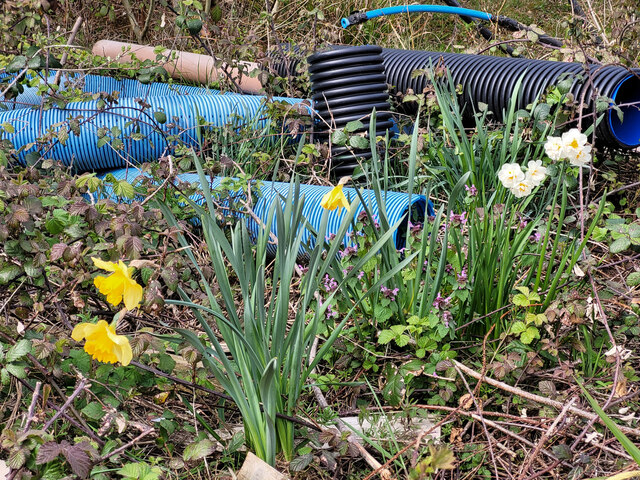
Three Major Types of Weeds
There are three major types of weeds, and these are:
- Annual weeds.
- Lawn weeds.
- Perennial weeds or woody weeds.
Annual or weeds last for one year or growing season. Yet they produce lots of seeds for the following year and years afterwards.
A great example of an annual weed is Fat Hen (Chenopodium Album) – the fastest-growing one. Another one is Creeping Woodsorrel (Oxalis Corniculata), a low-growing annual plant.
Lawn weeds, as the name suggests, grow within your lawn. They’re capable of suffocating the grass if overlooked.
Plantains, dandelions, and daisies fall under this category.
Perennial and woody weeds, meanwhile, have a deep root or a fibrous root. So they keep on coming back year after year.
This includes white clover, ground ivy, yellow nutsedge, and dallisgrass.
These weeds can re-grow from even the smallest left-over segment. Hence digging them up can often worsen the problem.


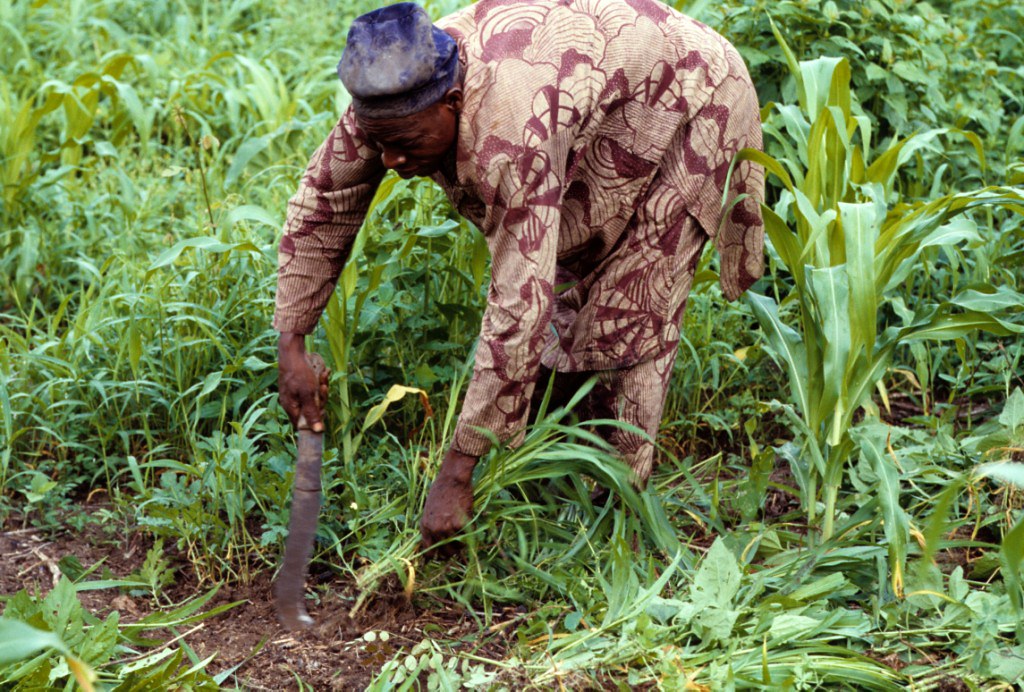
Tools for controlling weeds
Pulling out weeds with your hands can do the job. But sometimes, it pays to have some weeding tools on hand.
There are three essential tools for controlling weeds, and these are:
- Your hands.
- Hoes and hand hoes.
- Herbicides (weed killers).
Using your hands to get rid of those unwanted weeds is by far the easiest and most convenient method. It’s also the quickest way to weed; just get out your knee pads and start pulling.
But there are times when it’s impractical to use your hands alone. This is where hoes come in handy.
A tool like a hoe or garden hoe is perfect for pulling a large clump of tiny weeds up. It even works well for deep tap-rooted weeds.
There are many types of styles of garden hoes you can use. For one, there are multi-purpose hoes like angled Japanese hand hoes. These are great for weeding, digging and cultivating.


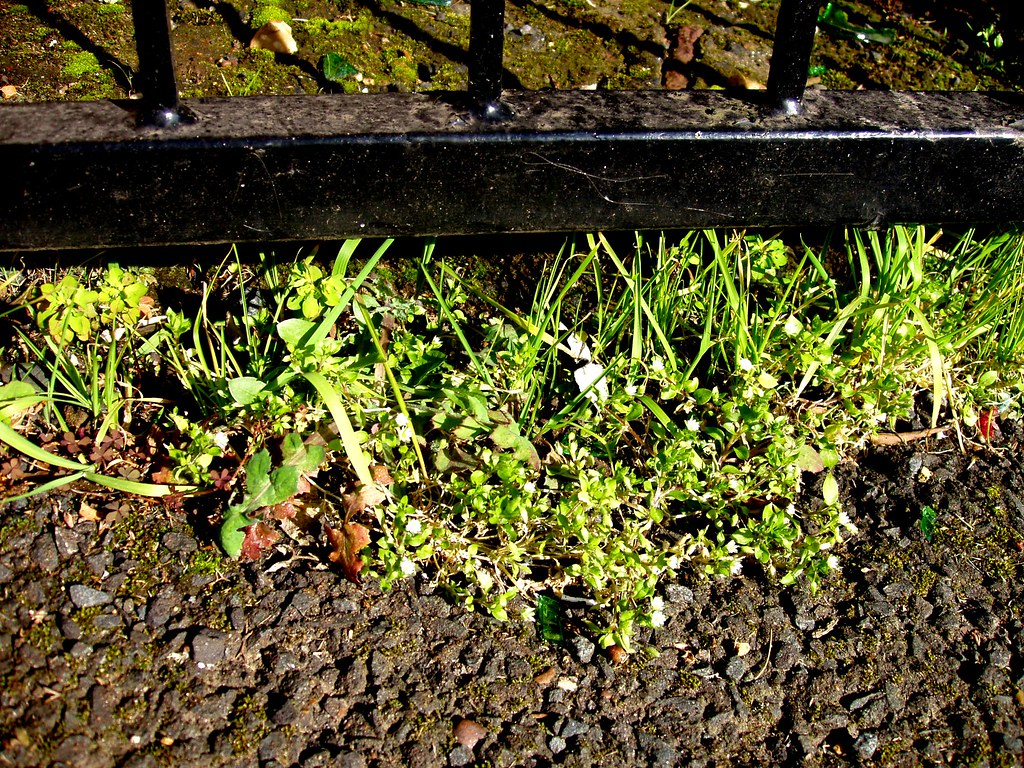
For widely dispersed weeds, a scuffle hoe can be your better bet, as it uses a push/pull action.
Last is herbicides, which are designed to kill unwanted plants like pesticides are used to kill pests. There are two types, and these are: synthetic and organic.
Whatever type of herbicide you choose, they should be sprayed sparingly and with great care. Keep in mind that you can’t always be selective enough to know what is a weed and what isn’t.
With that, you can either spray the whole area or spray the weeds individually. But even when you’re careful, chances are some herbicides may splash onto nearby plants.
We recommend using a small brush to spread the herbicide directly onto the weeds you want to kill.


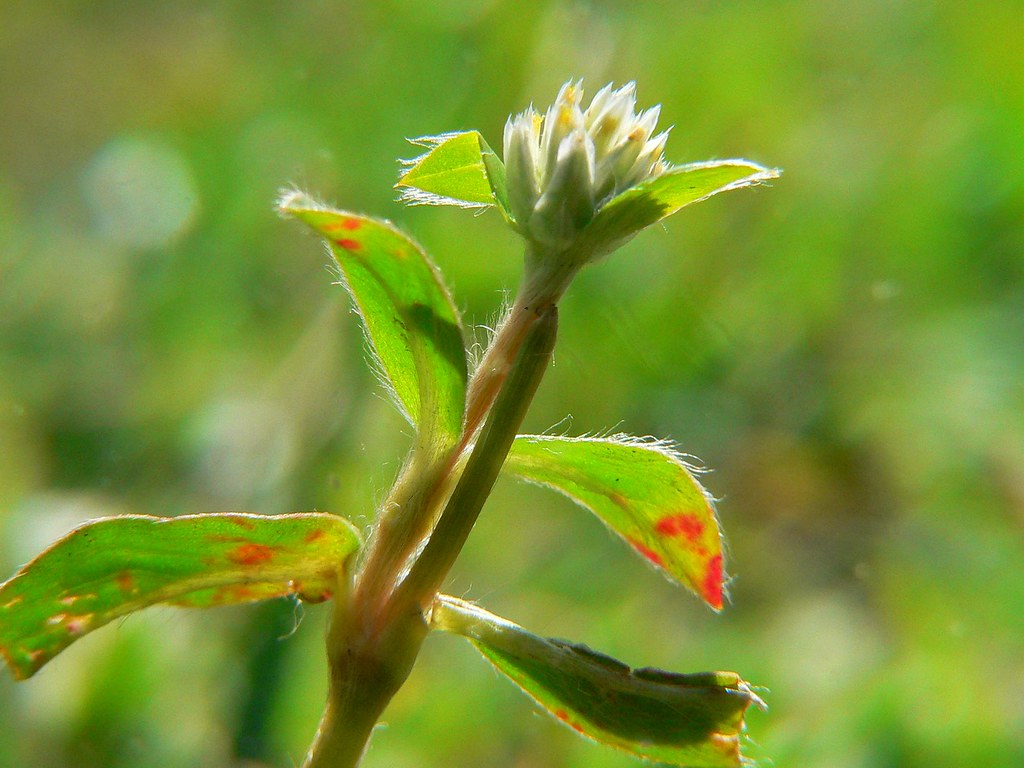
9 Most Common Lawn Weeds to Watch Out For
Now that you know which tool(s) can help you conquer the weeds in your garden, it’s time to learn what are the common lawn weeds could be hiding in your outdoor space.


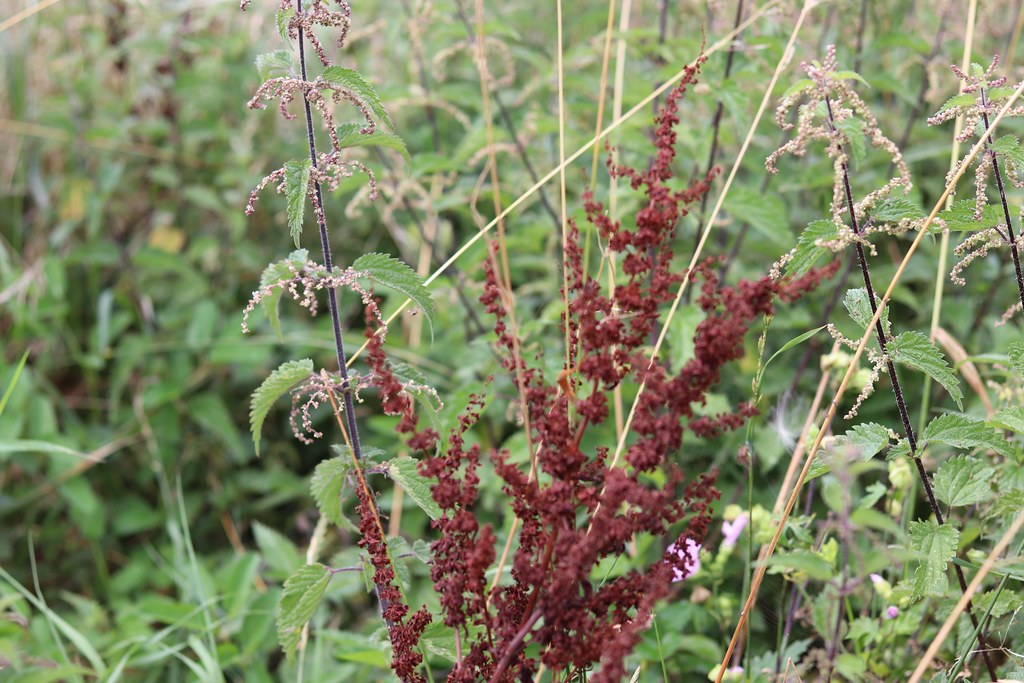
1. Broad-leaved dock
This weed species can be highly variable, making it hard to identify at times. It grows effectively in open or disturbed patches and in a wide range of soils.
To identify whether your garden has grown broad-leaved docks, the weed has large and oval-shaped green leaves. They bloom between May and October, producing small green/white flowers.
These blooms then will turn brown after pollination. This guide from Hunker might be helpful if you happen to have this type of weed in your garden and want to get rid of it ASAP.
Broadleaf weed is slightly poisonous and can cause sickness in livestock. Plus, the milky sap can lead to milk dermatitis, so be careful when dealing with this one!
To remove it effectively:
- Hand pulling: Wear gloves and pull the weeds by hand, ensuring you remove the entire root system. Do this when the soil is moist to make extraction easier.
- Mulching: Apply a thick layer of organic mulch around to suppress weed growth. This can also make it difficult for dock seeds to germinate.
- Herbicides: Selective herbicides containing glyphosate can be effective. Apply in accordance with the product’s instructions. Focus on the broad-leaved dock while avoiding other plants.


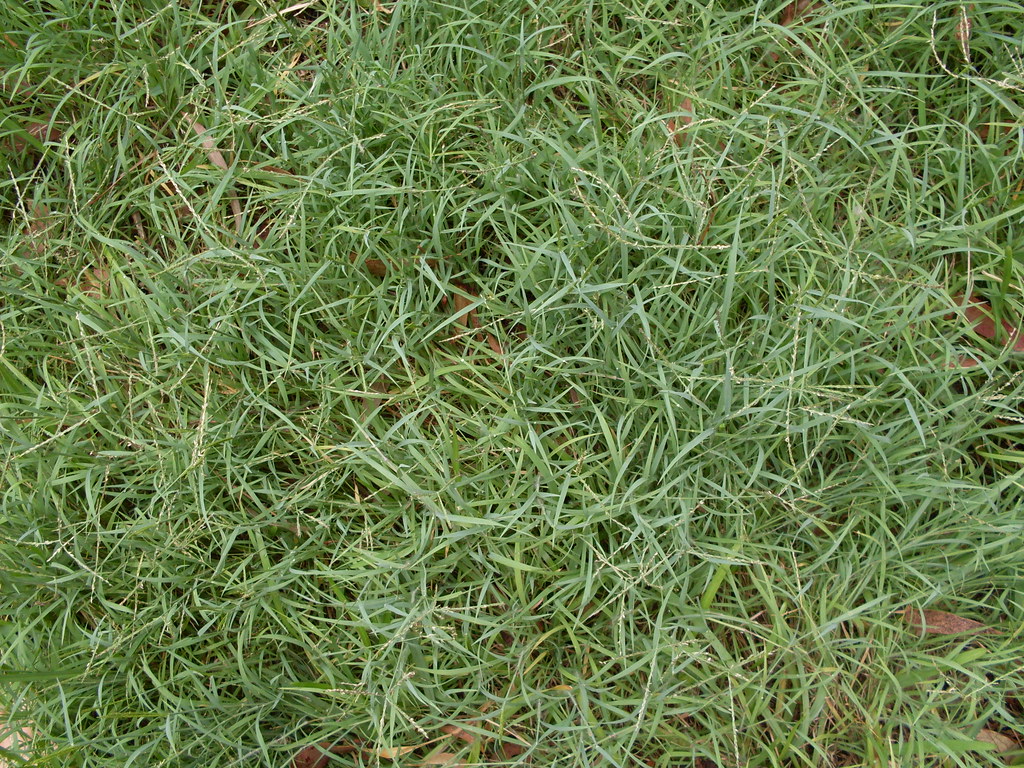
2. Couch grass
Couch grass weed can reach up to a height of two metres within one season. It can flourish in any soil condition, as well.
What’s more, couch grass is a common weed throughout England and Wales, and is even more scattered in Scotland.
To identify couch grass, it looks like a more rigid, thicker and longer version of regular grass. It also grows spiky shoots in more varied directions.
Couch grass, also known as quackgrass, is notorious for its rhizomatous growth. Control methods include:
- Digging: Carefully dig out the entire root system, removing as much of the rhizome as possible. Be diligent to avoid leaving any fragments behind.
- Mulching: Suppress couch grass by using a dense organic mulch. This method can help smother the grass and prevent sunlight from reaching it.
- Repeated mowing: Frequent mowing can weaken the grass over time. Be consistent in cutting, and eventually, the plant will struggle to survive.


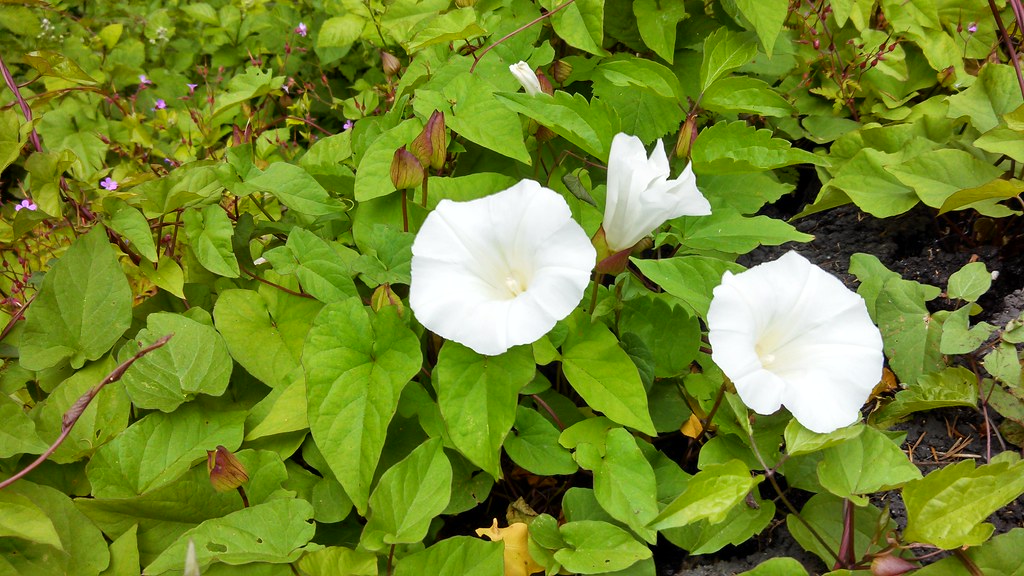
3. Hedge bindweed
Also known as morning glory, hedge bindweed is similar to a vine. It’s a perennial weed that twists and turns around other plants, fences and objects.
Hedge bindweed is also a common plant/weed found on riverbanks and in woodlands. It can be identified through its white trumpet-shaped flowers growing from the stem.
Bindweeds usually bloom between June and September. To prevent this twining weed from taking over your garden, consider the following removal:
- Hand pulling: Regularly inspect the area and pull out bindweed shoots as soon as they appear. Be thorough, as even small root fragments can regrow.
- Mulching: Apply a thick layer of organic mulch. This will prevent bindweed from receiving sunlight, hindering its growth.
- Herbicides: Non-selective herbicides containing glyphosate can be effective. Apply carefully to avoid damaging desirable plants.


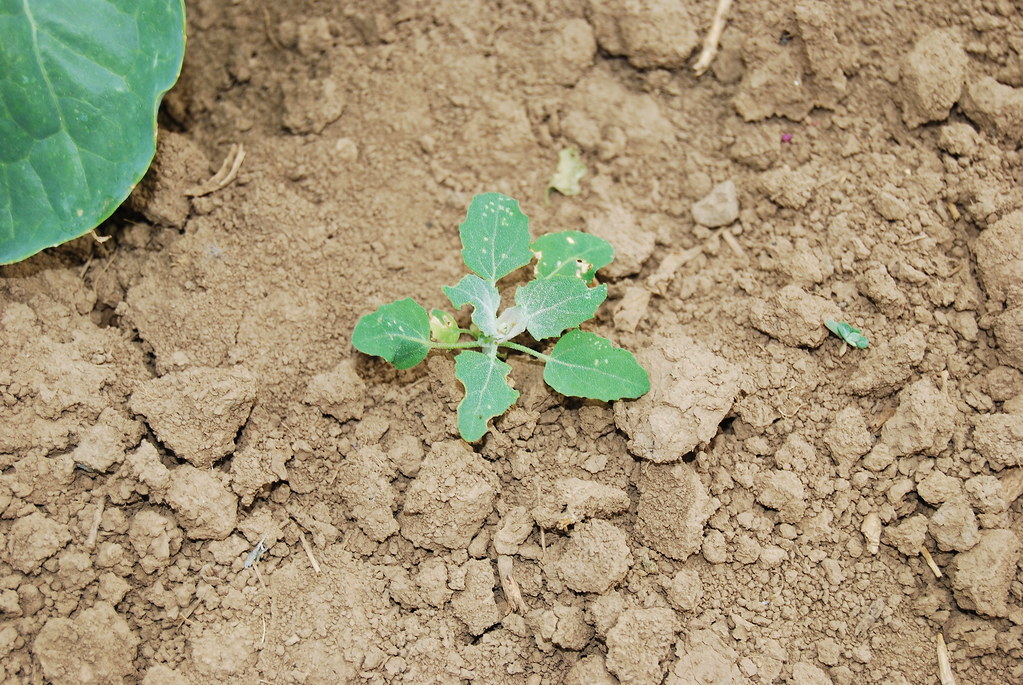
4. Lambsquarters
Lambsquarter is an annual broadleaf weed that usually invades lawns and gardens. It’s best to keep it out of your garden as it harbours viral diseases which can affect other plants.
This weed can be identified with its scalloped leaves with a grey underside. It often folds upward along the central vein.
Lambsquarters usually grow in landscape and garden areas under the sun or shade. What’s more, they can grow up to four feet tall and 18 inches wide. Control measures include:
- Cultivation: Regularly hoe or cultivate the soil to disrupt the growth of lambsquarters. This is effective when the plants are young.
- Mulching: Apply mulch to suppress growth. This also helps retain soil moisture and prevents new seeds from germinating.
- Hand pulling: Remove by hand when they are young and before they produce seeds. Be thorough to prevent re-infestation.


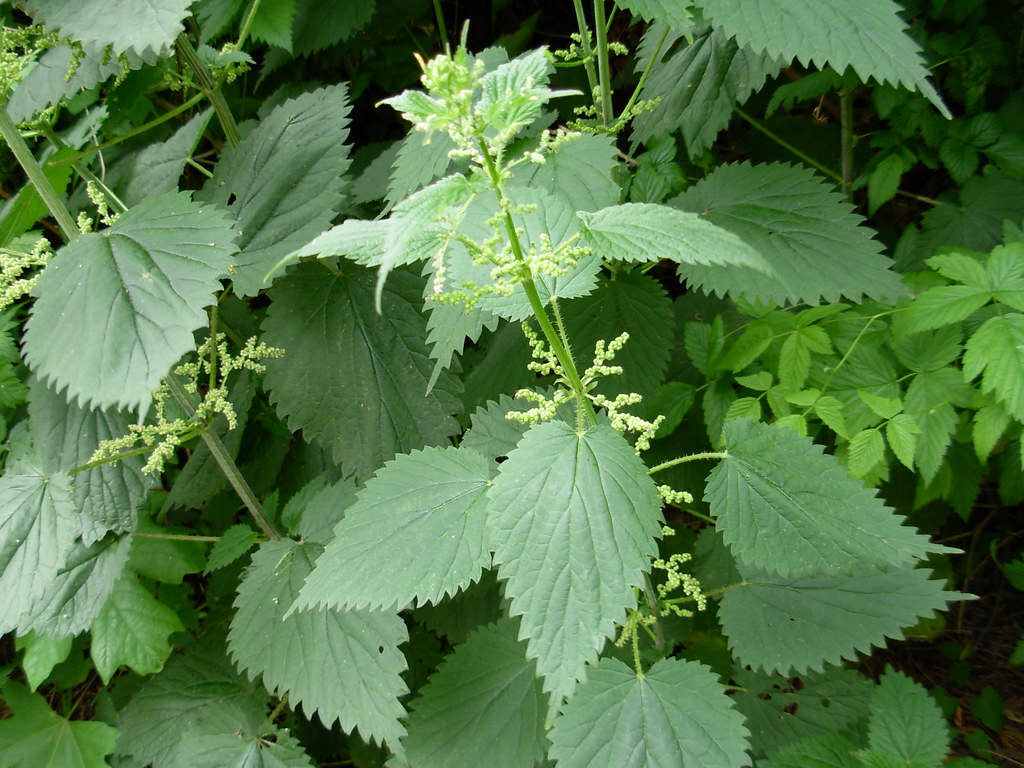
5. Nettle
This weed must have stung most people at least once in their lives because of its leaves. It has green, oval-shaped leaves with teeth lining the edges.
Nettle stems are square, and they contain tiny hairs. This weed can grow up to two metres tall.
Although it’s considered a medicinal herb, it can be quite invasive. If overlooked, this also can decrease your property’s curbside appeal.
It can be a big challenge, too, to get rid of stinging nettle. Effective removal strategies include:
- Wear protective clothing: Nettles can cause skin irritation. Wear gloves and long sleeves when handling them.
- Cutting and figging: Regularly cut and dig out nettles. Remove as much of the root system as possible. This requires persistence as nettles can regrow.
- Herbicides: Non-selective herbicides can be used on nettles. Apply cautiously, avoiding contact with desirable plants.
Trivia: Nettles, despite being known to sting, are one of the edible garden plants you can add to your meal!


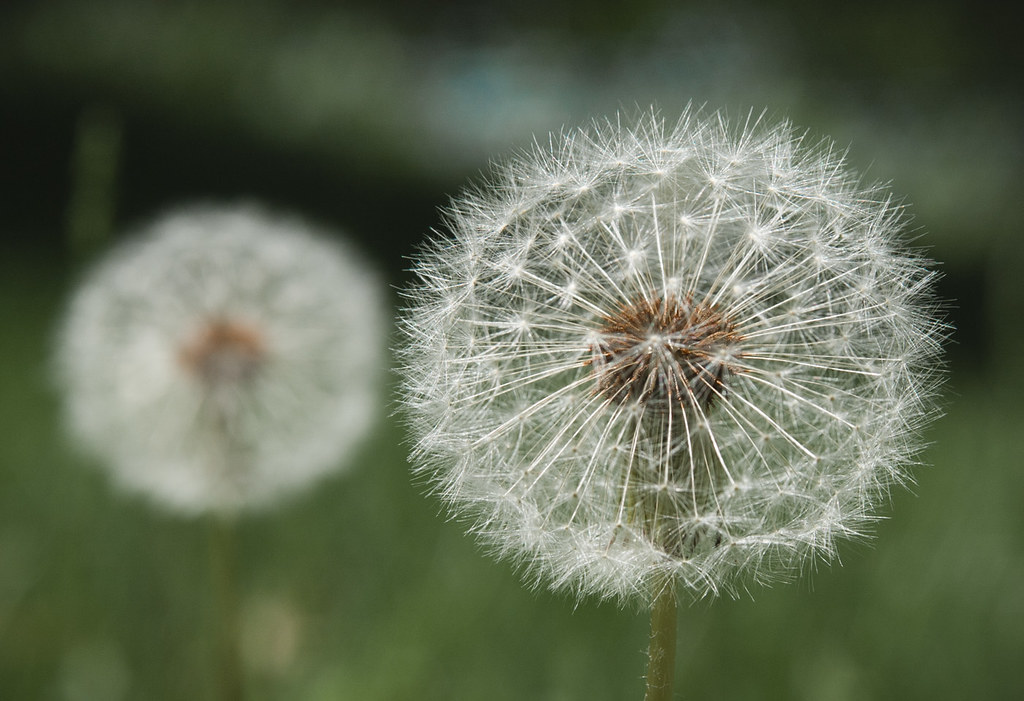
6. Dandelions
Dandelions are one of the most popular and easy-to-identify weed species. They have a large rosette with a long stout taproot. Their yellow blooms or fluffy white flowers are also distinctive.
Their taproots can reach 10 inches into the soil and can take root just about anywhere. Plus, they’re perennials, which means they come back on their own every year.
To keep Dandelions at bay:
- Dandelion digger: Use a dandelion digger or a similar tool to remove the entire taproot. Ensure you get as much of the root as possible.
- Mowing: Regular mowing can prevent dandelions from producing seeds and spreading. Maintain a healthy lawn to outcompete the weeds.
- Herbicides: Selective herbicides designed for broadleaf weeds can effectively control dandelions. Follow the product instructions for proper application.


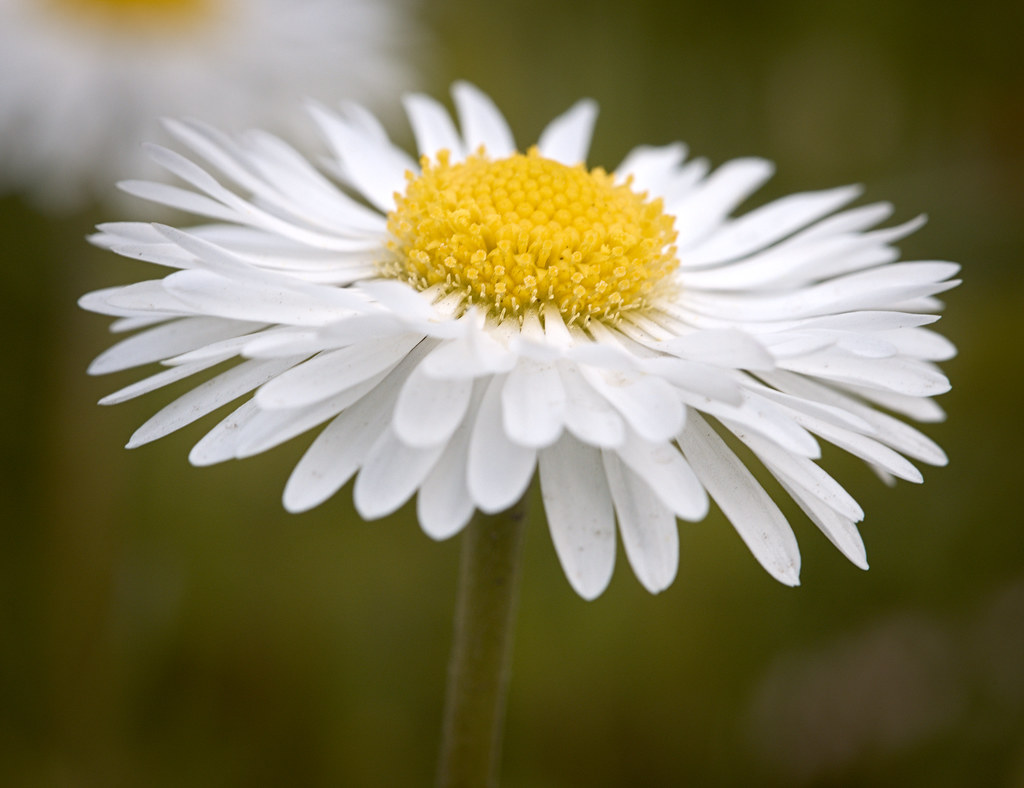
7. Daisy
Most of us might not realise this: but daisies are, in fact, weeds. Even so, they are one of the most recognisable lawn weeds in the UK.
Daisies can grow in a wide variety of soil conditions and locations. They can also out-compete the growth of other weeds, causing them to weaken and die.
If you are not yet familiar with daisies, they are small white-flowered weeds with a yellow centre. They also have small rosettes at the base from which the flower sprouts.
Control strategies include:
- Hand pulling: Regularly hand-pull daisies. Make sure to remove the entire plant, including the roots.
- Mowing: Regular mowing can help control daisies. This technique helps prevent them from flowering and setting seed.
- Herbicides: Broadleaf herbicides can be applied to control daisies. Apply according to the product’s instructions, and avoid spraying on windy days.


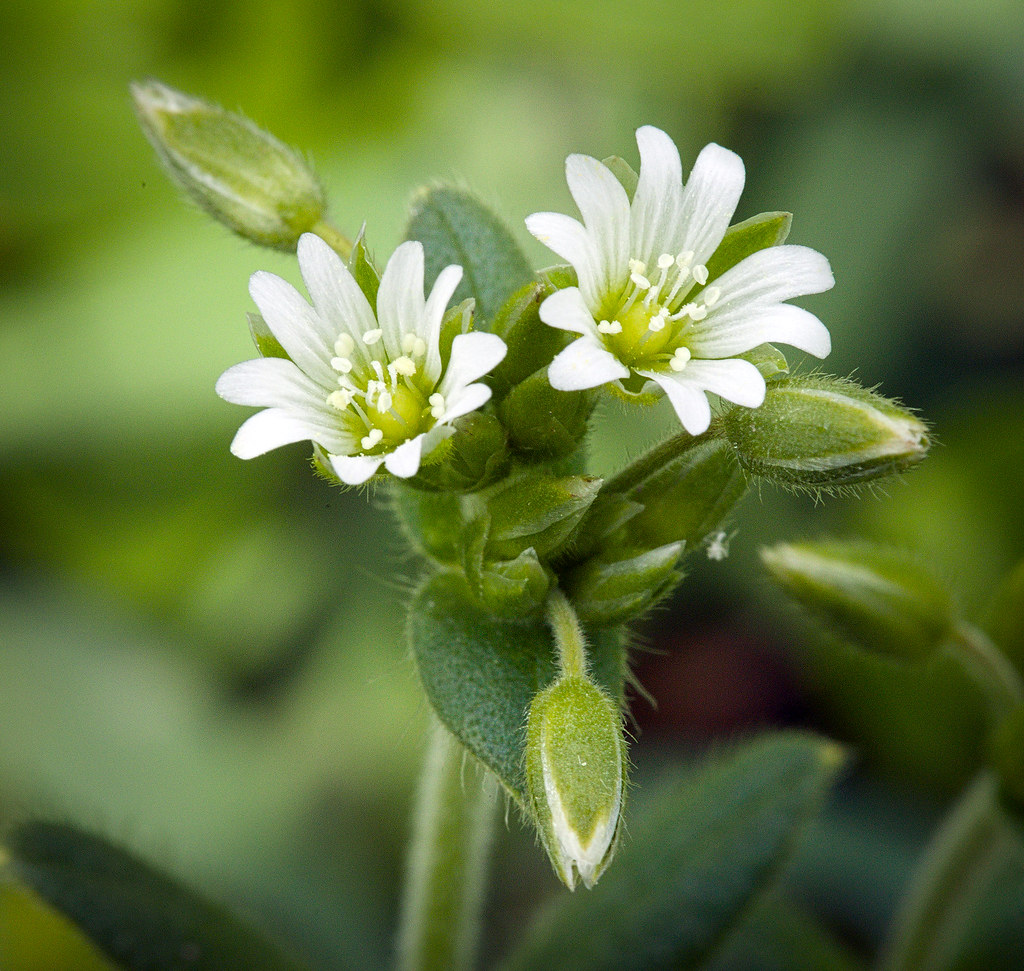
8. Chickweed
One of the most common UK weeds, chickweed varies in size and weight. You can identify one by its small white star-shaped flowers and tiny white line of hair that grows along the stem.
The texture of common chickweed leaves also differs from smooth to slightly furry. If you spot some growing in your yard, it’s best to get rid of it immediately.
This is because they attract spider mites and greenflies. These are pests that can ruin any edible food you are growing in the garden. So watch out!
To remove this low-growing annual weed:
- Hand pulling: Chickweed is easily pulled by hand, especially when the soil is moist. Be thorough in removing the entire plant.
- Mulching: Apply mulch to suppress chickweed growth and prevent new seeds from germinating.
- Cultivation: Cultivate the soil to disrupt chickweed growth. This is most effective when the plants are young.


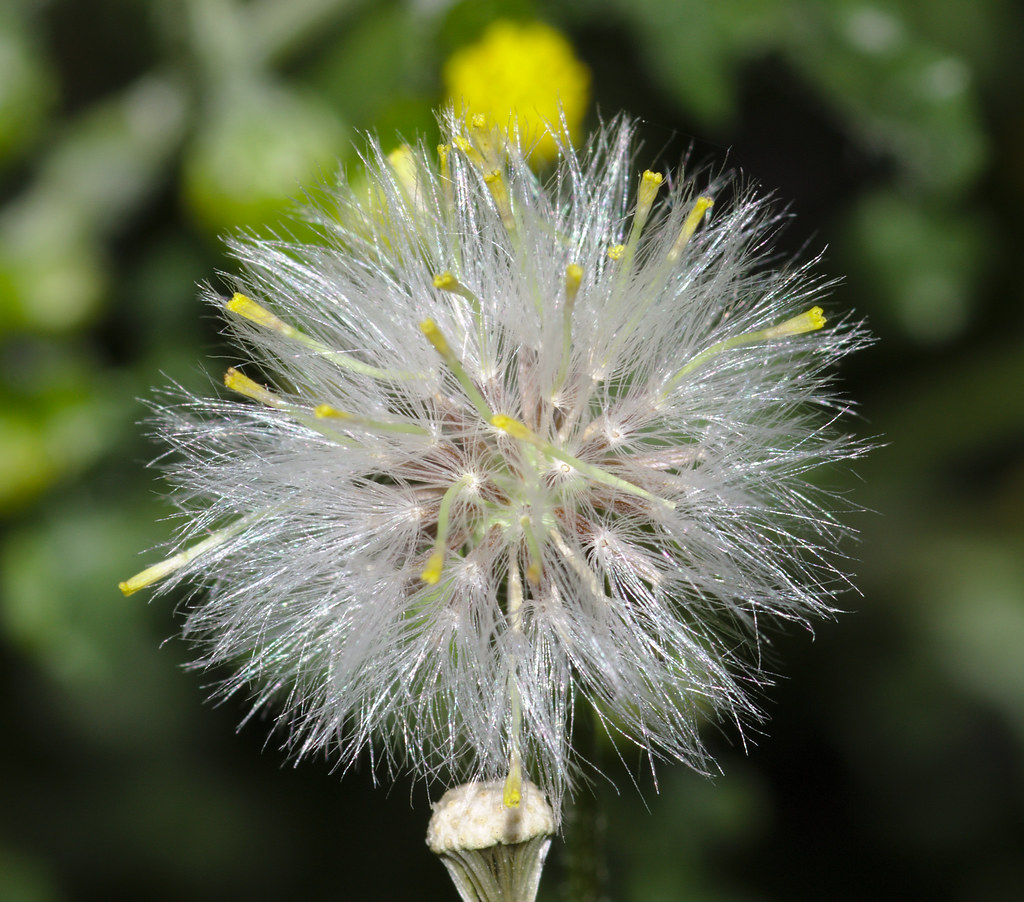
9. Groundsel
This weed’s leaves vary from slightly hairy with cotton-like hairs to smooth. Groundsel is a bushy weed species that can grow up to two feet tall.
It bears small yellow flowers and fluffy seed heads. Its leaves often have orange-brown pustules of rust fungus during summer and autumn. This can spread to cultivated plants if neglected.
Control this annual weed from spreading with these methods:
- Hand pulling: Hand-pull groundsel when it is young and before it produces seeds. Be thorough to prevent re-infestation.
- Mulching: Apply mulch to suppress groundsel growth and create unfavourable conditions for germination.
- Herbicides: Pre-emergent herbicides can be effective in preventing groundsel seeds from germinating. Apply according to the product’s instructions.
Round-Up
Here are the common types of UK weeds that can destroy both your garden and property’s curbside appeal:
- Broad-leaved dock
- Couch grass
- Hedge bindweed
- Lambsquarters
- Nettle
- Dandelions
- Daisy
- Chickweed
- Groundsel
Some of them are stingers, such as the nettles. So make sure you always have garden tools, like hoes, on hand, especially when dealing with one. And if you need somewhere to store all those items, check out our garden sheds via the button below. Visit BillyOh today for more!
Up next on your reading list: The Essential Tools You Need for Gardening
Shop Rattan Garden FurnitureFAQs
What are the three types of weeds?
Weeds can be classified according to their gross morphology, their habitat and their life cycle.
- Annual weeds complete their life cycle in one year or less.
- Biennial weeds (e.g. lawn weeds) live more than one year but not more than two years.
- Perennial weeds live more than two years.
What are the worst weeds?
Bindweed is one of the worst culprits; it twirls itself around prize plants. And you'll be in trouble if you try to pull it out from the top.
You need to follow its path down to the soil and pull it up from the base, with every last piece of the root as you come across it.
What are the most common garden weeds?
- Broad-leaved dock
- Couch grass
- Hedge bindweed
- Lambsquarters
- Nettles
- Dandelions
- Daisy
- Chickweed
- Groundsel

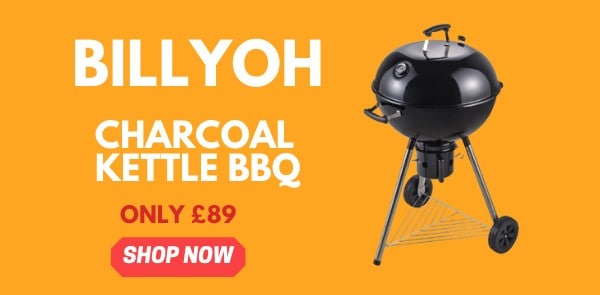


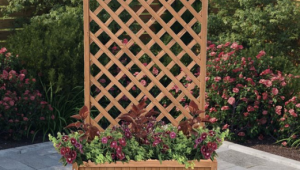



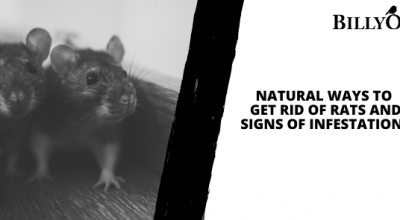




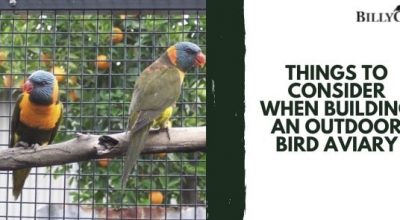
What do you think ?